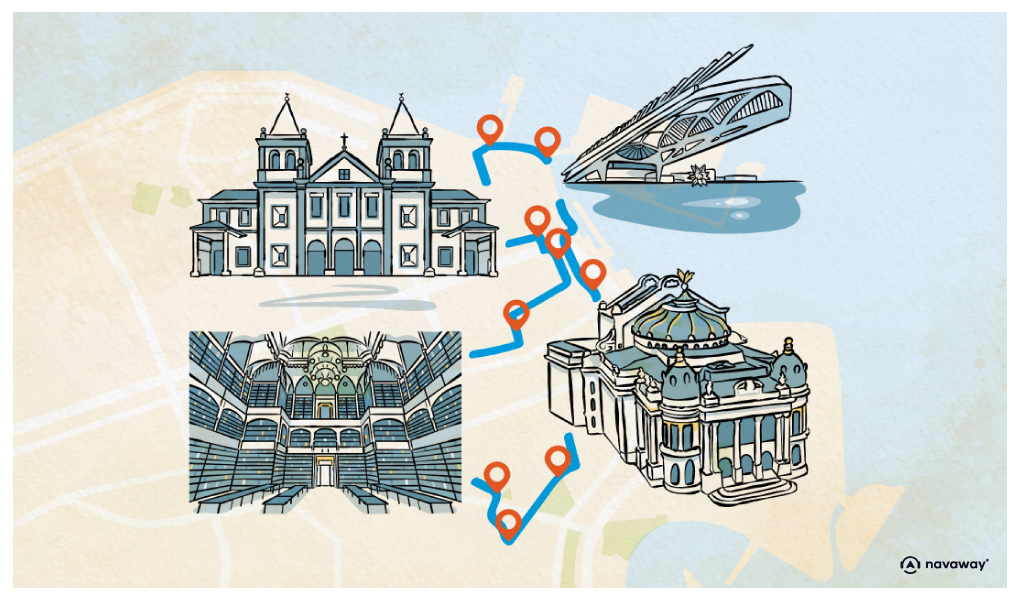
Carioca Square

This point of interest is available as audio on the tour: Visit Rio de Janeiro, La Cidade Maravilhosa – The City of Wonders
Introducing Carioca Square, one of the city’s busiest spots, home to a huge metro station serving several lines. It may be modern, bustling with hundreds of suited businessmen, office workers and street vendors, but it also boasts remnants of Rio’s colonial past. Starting with the Santo Antoño convent, perched atop its namesake hill. You can reach it via the park on the left, and explore the richly decorated interior of the church, all while enjoying stunning views over the district. The exterior may not look like much, with its façade remodelled in colonial style, but the interior is truly jaw-dropping. Right next door, you’ll find a museum housed in a single-nave baroque structure, with no chapel. It’s covered in gold leaf and exquisite sculptures, and features a statue of Jesus with giant angel wings! Admission to the church is free, but there is a small fee to enter the museum. That being said, it’s worth every penny! And speaking of Carioca, since we’re here at the namesake metro stop, have you ever wondered why people from Rio are called Cariocas? Well, I can tell you, but problem is, there are lots of theories! The most popular one goes back to the Tupi language spoken by the indigenous tribes who lived here before the Portuguese arrived. In Tupi, “kari” means white and “oka” means house. So, it could mean “house of the white man”. However, some experts doubt that the indigenous people actually called Europeans “Kari”. Then again, the name could just come from the whitewashed houses that were among the first buildings constructed along the riverbank back in 1503. And here’s a more creative, but frankly plausible theory, since Native Americans tend to give names based on physical resemblance; Carioca might be a shortened version of “akari,” the Tupi word for catfish. And there can be two explanations. First, the Tijuca River where the colonists settled was called Akari’oka because it was full of catfish. Second, the invaders’ armour reminded the indigenous people of catfish scales. Whatever the exact origin, the name “Carioca” has come to reflect the city’s rich history and vibrant culture.


Discover Rio de Janeiro with app
An interactive guide through the most beautiful streets, squares, and districts
24 fun audioguides full of historical facts, anecdotes, and legends





Comments